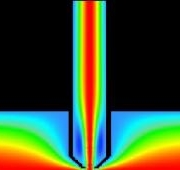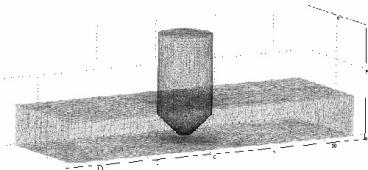 Computational Fluid Dynamics (CFD) studies are performed to illuminate the fluid dynamics of FDG, with particular focus on the flow patterns and on the stresses imposed on the surface. The governing Navier-Stokes and continuity equations are solved using the finite element method implemented by a commercial partial differential equation solver. Comparisons of the CFD results with experiments are good, thus increasing confidence both in the simulations and the experimental results.
Computational Fluid Dynamics (CFD) studies are performed to illuminate the fluid dynamics of FDG, with particular focus on the flow patterns and on the stresses imposed on the surface. The governing Navier-Stokes and continuity equations are solved using the finite element method implemented by a commercial partial differential equation solver. Comparisons of the CFD results with experiments are good, thus increasing confidence both in the simulations and the experimental results.
The CFD results can be used to quantify the stresses required to remove a soft fouling deposit from a solid substrate, and the deposits associated removal behaviour. FDG can now be used, in effect, as a micron-scale analogue of an atomic force microscope which may be used with a wide range of solvents and temperatures, with opaque fluids and in flowing liquid systems. It has been used to determine the cohesive and adhesive of deposits, namely cooked tomato paste and crystal scales. This application gives useful information because it allows the liquid velocities required to fully remove fouling deposits in pipe flows to be calculated, supporting the design of cleaning-in-place (CIP) installations.


